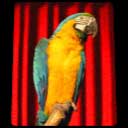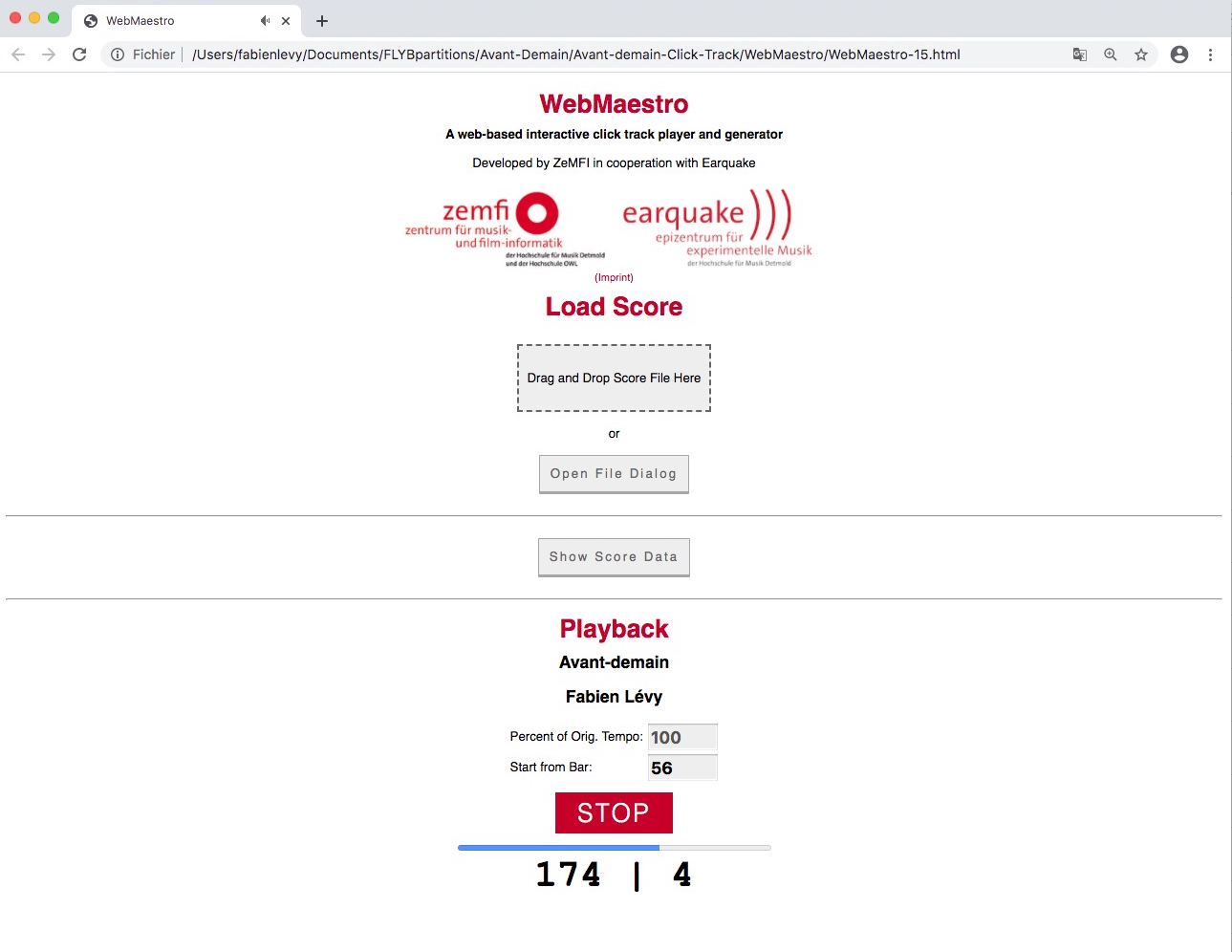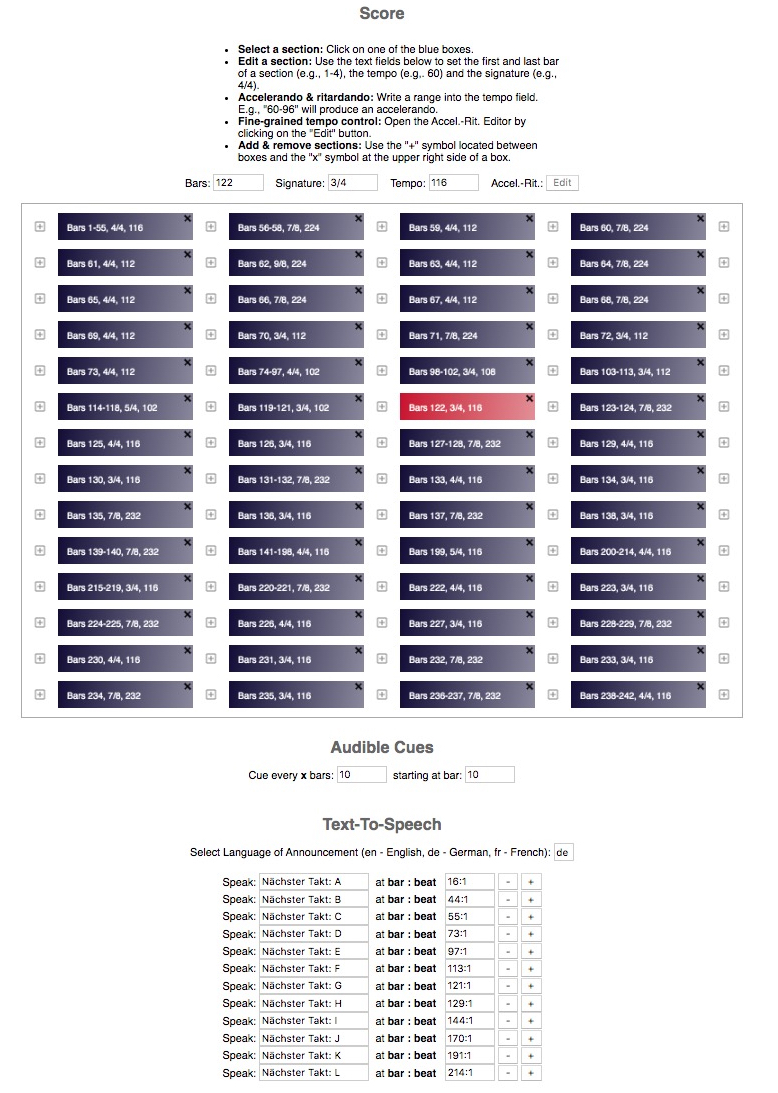Studio on line
Artistic Direction for the conception of an electroacoustic studio-on line and a database of downloadable instrumental sounds (20.000 samples).
CD-Rom The Real-Time in Music
CD-ROM for the exhibition at Centre Georges-Pompidou (also in Roma and Barcelona) about Time (January 2000).
PARETO: Patchs d’Analyse et de Resynthèse des Echelles dans les musiques de Tradition Orale (Patchs for the Analysis and the Resynthesis of musical scales in ethnomusicology)
This set of patches has been written by Fabien Levy, adapted into an Open Music library by Jean Bresson, with the technical and ethnomusicological help and advises from Carlos Agon, Simha Arom, Gerard Assayag, Jean Bresson, Fabrice Marandola, Hans Tutschku and Frederic Voisin for an ethnomusicological travel in July 2001 to Cameroon (Nathalie Fernando, Fabien Lévy, Fabrice Marndola, scientific director: Simha Arom).
![[cml_media_alt id='3782']pygmees[/cml_media_alt]](https://fabienlevy.net/wp-content/uploads/2014/07/pygmees-160x160.jpg)
Pareto is a library of patches made for the software Open Music from IRCAM which offers three functionalities:
1) To transcribe an acoustic signal (from Diphone, Audiosculpt, Spear, etc..) into musical information (in exact midicents or herz, or in musical notation approximated in half-tone, third of tone, quarter-tone, eight of tone, ore more)
2) To propose statistical tools (curves, most present frequencies, mobile average, etc..) to help to determine the pitch-scale of the musical signal.![[cml_media_alt id='3794']ParetoAnalysis[/cml_media_alt]](https://fabienlevy.net/wp-content/uploads/2014/07/ParetoAnalysis-580x251.jpg)
3) To change or adjust the musical signal with new hypothesis (new scale, or discretisation, etc..), and then to make similar changes of the scale on the acoustic signal itself (through microtransposition on SVP).
Work for computer solo, circa 15′, Commissioned by the Festival Inventionen, Berlin.
Dedicated to Ingrid Beirer, Folkmar Heim and Thomas Seelig.
1. Prasentation:
(Program note of the Festival Inventionen 2002)
Is it possible compose a mini-composer ? SOLILOQUE about [X, X, X et X] (the X’s are to be replaced by the first names of the composers of the other works which are used as samples, for example Soliloque about Pierre, Wolfgang and Williams) is not an actual work, but more a meta-score that the computer generates in real-time from the analysis and extracts of other pieces played during the concert. This means that the generated work is different for every concert, not only because the materials constituting this mosaic originate from the sonorities retained from other pieces, but also because the organization of the mosaic is itself transformed according to the analysis of the samples.
The goal here is not for the listener to recognize extracts replicated from other works of the concert (the extracts, which are no longer than twenty seconds, are generated from a chord here, a signal there, etc..). It is rather to keep the spirit and the color of those extracts in order to generate a “score”, and then to use them as “instruments” to interpret this score. The goal of this project is also to generate a slightly different piece for each performance (or more precisely, a different interpretation of the same piece). Indeed, the style of the composition remains the same, my own, without any randomness. In other words, it is not the computer that interprets the concert, but the concert that interprets the work, Soliloque.
This project of a meta-work depending on the context has allowed me to further develop and abstract some compositional techniques that I was using in my instrumental music. These techniques are however transposed here upon the sonorous phenomenon. Indeed, those techniques operate more on acoustical and psycho-acoustical parameters of sound than on traditional parameters like rhythm, tone, or dynamics. Here, the techniques are elaborated not on tones but on sound objects, not on rhythm but on position of reading and on duration, not on intervals but on the speed of reading, not on nuances but on intensity, filtering and spaces.
I wrote this contextual meta-score entirely with the software SuperCollider, within the possibilities and constraints that this “instrument” proposes, and with the precious help of Thomas Seelig, musical assistant, Frederic Roskam for the complex porting on OSX, and of Thomas Noll for the mathematical calculation of the ‘Vuza canons’.
WebMaestro is a web-based click track editor and player conceived by Aristotelis Hadjakos and Fabien Lévy and written by Prof. Aristotelis Hadjakos (Center for Music and Film Informatics -Cemfi-).
The click-track player allows:
. a Visual click-track with indication of measure number and beat.
. an Audio click-track with optimized midi-sounds tested with musicians from Ensemble Klangforum Wien.
. Possibility to start the player on a given bar and in another tempo (in percent of the original tempo), for instance in rehearsal.
. Possibility to display the running score (pdf or jpg), using the synchronisation software Maestro [to be re-implemented in the future].
Through the editor, you can easyly edit:
. changes of tempi and metrics
. accel./rall. also in the middle of a bar, and using different curves (linear, exp.)
. regular audiocues (for instance every 10 bars) and local text-to speech cues (for instance “next bar, section D“) in German, French or English.
. Save and load the datas.
WebMaestro requires advanced audio skills that are not (yet) available in all browsers. Therefore, he is currently only running on Chrome or Safari.
you can freely download Webmaestro here.
Example of Use of Webmaestro (click-track editor and player, freeware) for the piece “à tue-tête”:
For Mac:
For Windows:

![[cml_media_alt id='3793']ParetoTranscription[/cml_media_alt]](https://fabienlevy.net/wp-content/uploads/2014/07/ParetoTranscription-580x200.jpg)
![[cml_media_alt id='3795']ParetoModifScale[/cml_media_alt]](https://fabienlevy.net/wp-content/uploads/2014/07/ParetoModifScale-580x480.gif)
![[cml_media_alt id='3798']ExempleNdeye[/cml_media_alt]](https://fabienlevy.net/wp-content/uploads/2014/07/ExempleNdeye-580x342.jpg)

![[cml_media_alt id='3804']EcranSol[/cml_media_alt]](https://fabienlevy.net/wp-content/uploads/2014/07/EcranSol-580x312.jpg)

